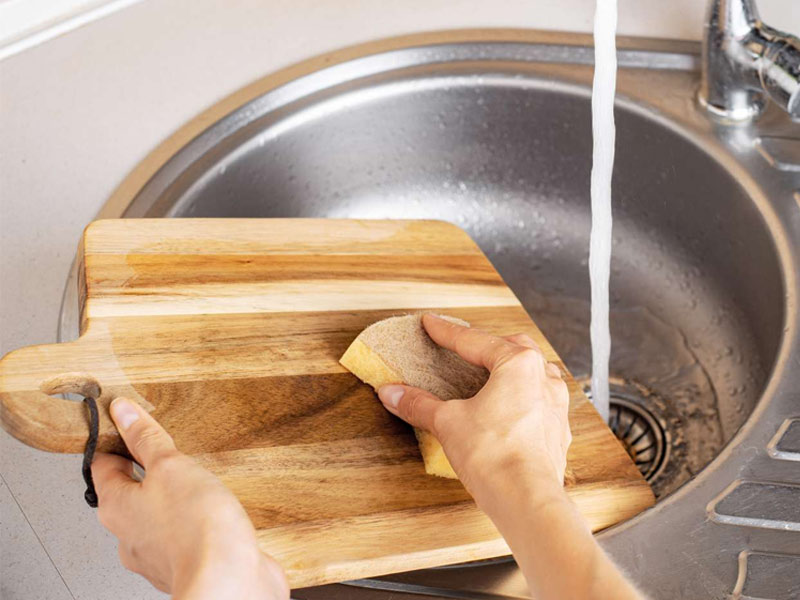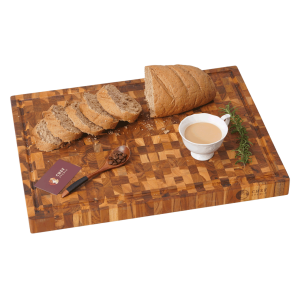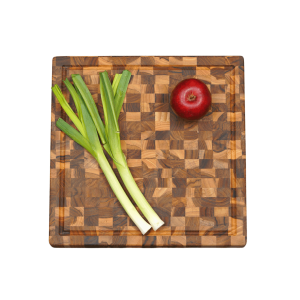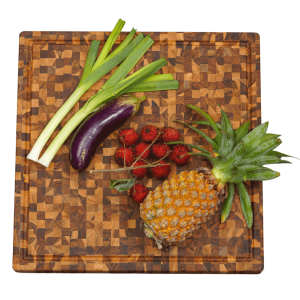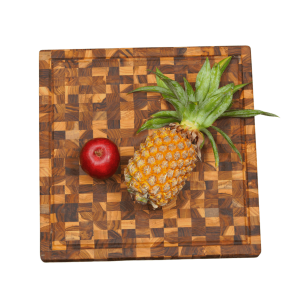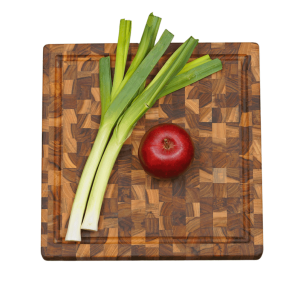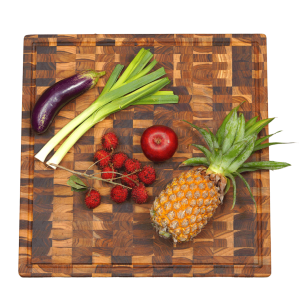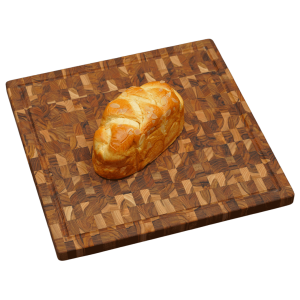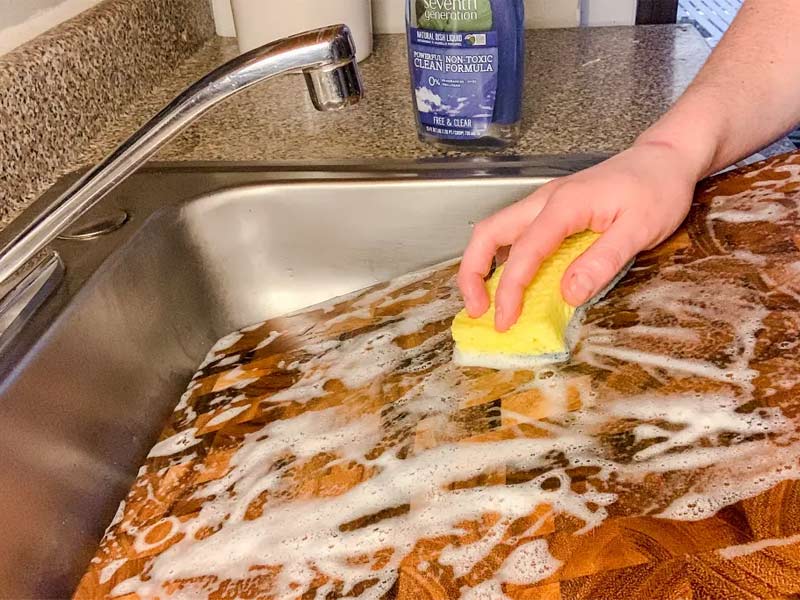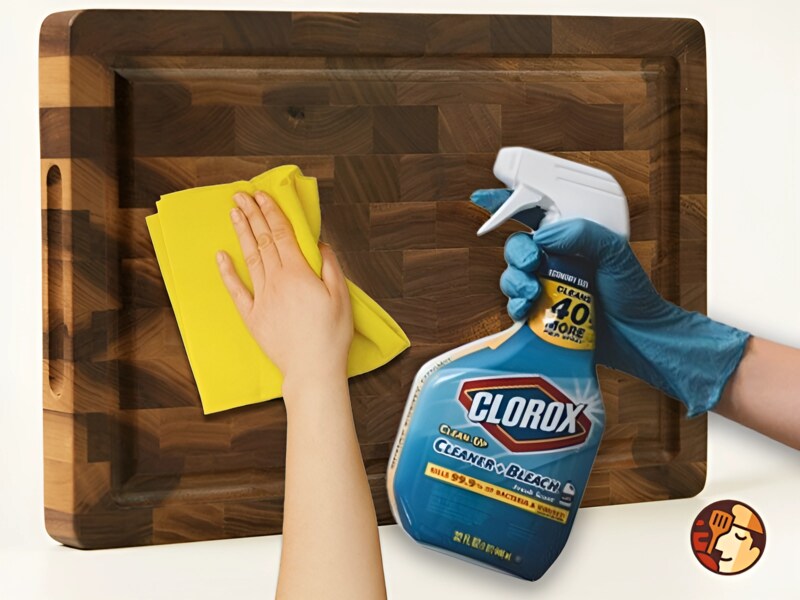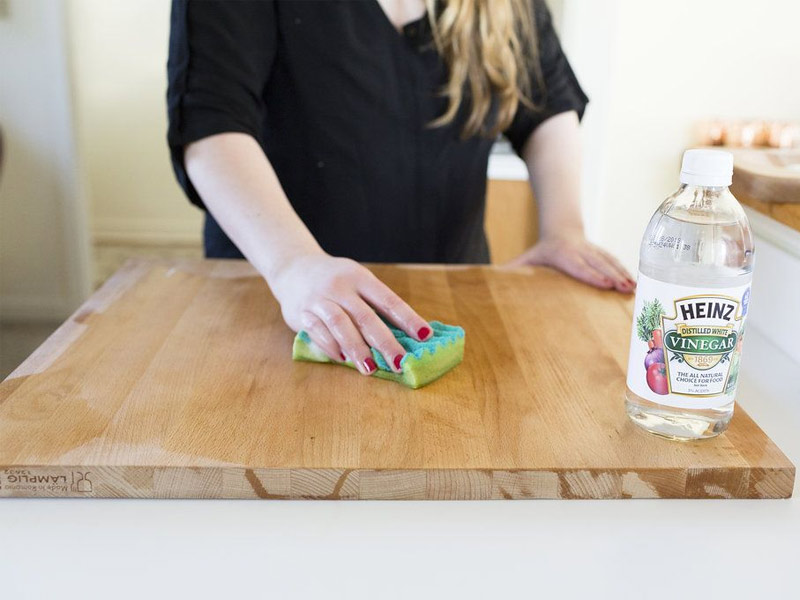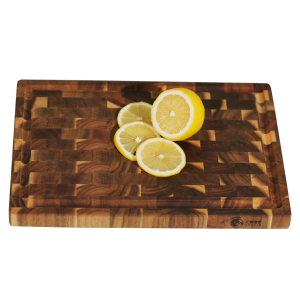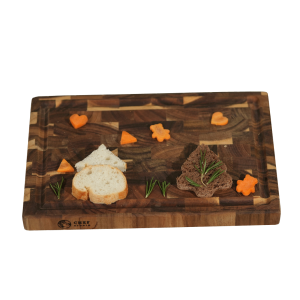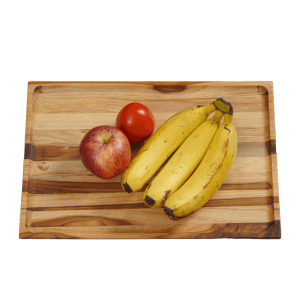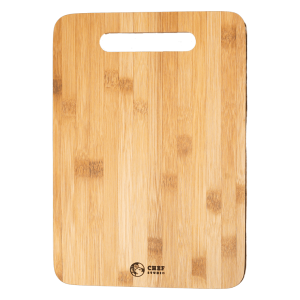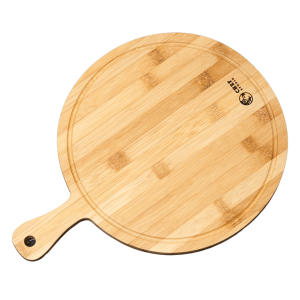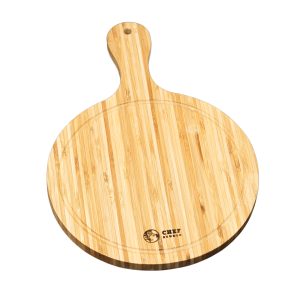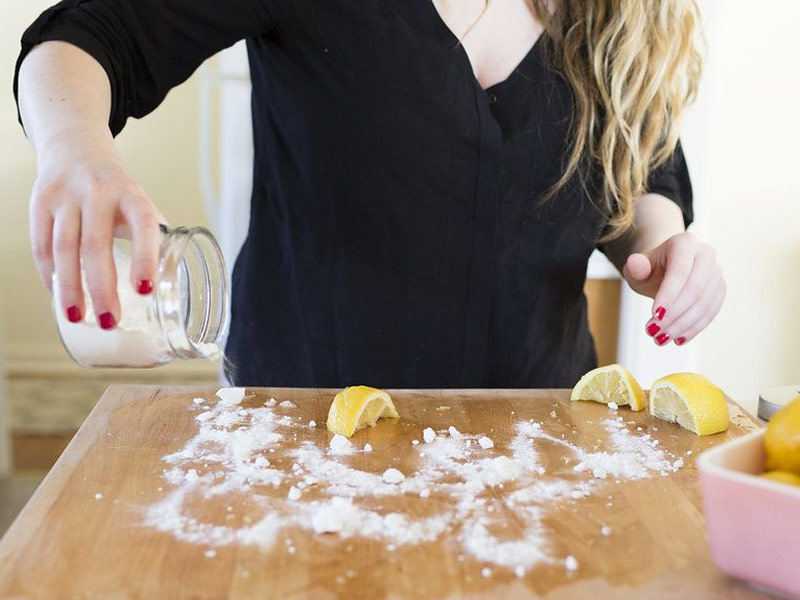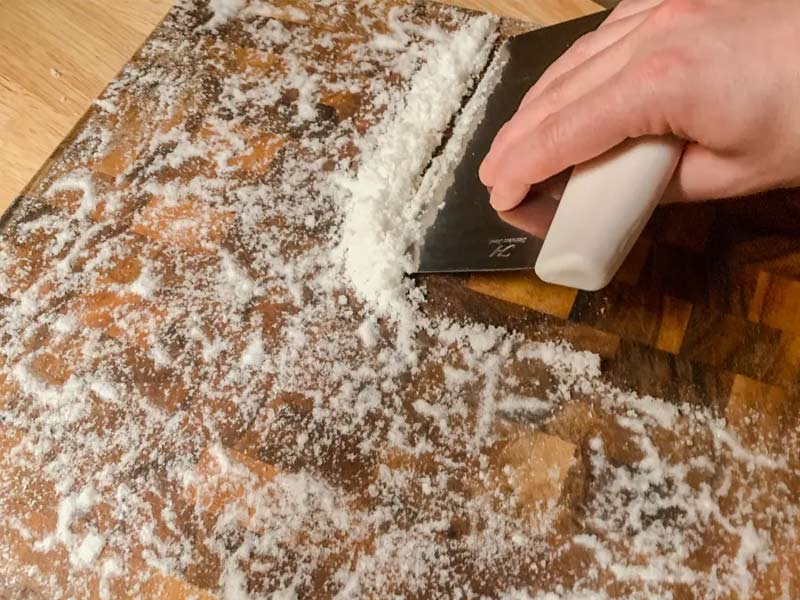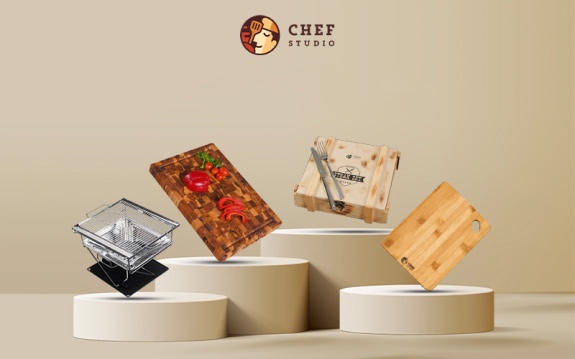5 best ways to clean a wooden cutting board
Are you tired of struggling to clean your wooden cutting board effectively? Chef Studio’s comprehensive guide will provide you with the best ways to clean a wooden cutting board to keep it spotless and sanitary. From simple daily maintenance to deep wooden cutting board treatments, we cover it all. Say goodbye to stubborn stains and odors, and hello to a pristine cutting surface every time you cook!
Why should you wash wooden cutting boards regularly?
You should wash wooden cutting boards regularly to maintain food safety and prevent cross-contamination. Here are some reasons why should you wash wooden cutting board:
- Remove food residue: Washing helps remove food particles and residue from the cutting board’s surface, preventing bacterial growth and odors.
- Eliminate bacteria: Cutting boards are notorious for being a primary source of cross-contamination in the kitchen. Recent studies have revealed that cutting boards can harbor significantly more bacteria than even a toilet seat, reaching levels up to 200 times dirtier. This alarming fact underscores the potential risk of contaminating food with harmful pathogens like salmonella, E. coli, or campylobacter, which can pose serious health risks to you and your family. Washing with hot, soapy water helps kill harmful bacteria that may be present on the board, reducing the risk of foodborne illness.
- Prevent cross-contamination: Regular washing prevents cross-contamination between different types of food, reducing the risk of spreading harmful bacteria from one food item to another.
- Maintain board hygiene: Cleaning a wooden cutting board regularly helps maintain its hygiene and extends its lifespan by preventing the buildup of stains, odors, and bacteria.
Overall, washing wooden cutting boards regularly is essential for ensuring food safety and maintaining a clean and hygienic kitchen environment.
Read more: Top 10+ best Teak wood cutting boards for sale
5 best ways to clean a wooden cutting board
Effective cleaning is essential to preserving food safety and extending the life of a wooden cutting board. These are the top five ways to sanitize a wooden chopping board:
Using dish soap to clean wooden cutting board
Can you use soap on a wooden cutting board? One of the best ways to clean a wooden cutting board is using dish soap. Despite the misconception that soap can damage wood when used correctly, dish soap is safe for cleaning wooden cutting boards.
Before cleaning, scrape off any food residue or debris from the cutting board using a scraper or spatula. This helps loosen any stuck-on particles and makes cleaning more effective.
Apply a small amount of mild dish soap onto the surface of the cutting board. Using a sponge or soft-bristled brush, gently scrub the entire surface of the board, including both sides and the edges. Finally, use warm water to rinse off the soap and food particles.
Sanitizing with bleach
Bleach emerges as a powerful ally in the battle against cutting board contamination. Its potent disinfectant properties make it highly effective in killing bacteria that may persist even after routine cleaning with soap and water. To further sanitize the cutting board, you can use a diluted bleach solution:
- For a diluted bleach solution, mix one-part bleach with four parts water. Alternatively, for white vinegar, use equal parts of vinegar and water. Ensure you use a clean container to mix the solution.
- Using a clean cloth or sponge, apply the diluted bleach solution or white vinegar onto the surface of the cutting board. Make sure to cover the entire surface, including both sides and the edges.
- Let the solution sit on the cutting board for a few minutes to allow it to effectively kill any bacteria or germs present on the surface.
- After allowing the solution to sit, rinse the cutting board thoroughly with water to remove any residue. Ensure that you rinse off all traces of the bleach solution or vinegar to prevent any lingering taste or odor.
- After rinsing, dry the cutting board completely with a clean towel or air-dry it upright in a well-ventilated area. Ensure the board is completely dry before storing it to prevent mold or mildew growth.
This is one of the best ways how to sanitize a wooden cutting board. It’s a simple yet powerful method that can be easily incorporated into your regular cleaning routine to maintain optimal hygiene in your kitchen.
Disinfect the wooden cutting board with vinegar
To disinfect a wooden cutting board with vinegar, follow these simple steps:
- Mix equal parts of white vinegar and water in a spray bottle.
- Spray the solution generously onto the surface of the wooden cutting board, ensuring that it is completely covered.
- Allow the vinegar solution to sit on the cutting board for about 5-10 minutes to effectively remove grease stains on the wooden cutting board, and kill bacteria and germs.
- After the soaking period, use a clean cloth or sponge to scrub the surface of the cutting board, focusing on any areas with stubborn stains or grease buildup.
- Rinse the cutting board thoroughly with warm water to remove any vinegar residue.
- Allow the cutting board to air dry completely before storing or using it again.
Vinegar is a natural disinfectant that helps to kill bacteria and remove odors from wooden surfaces, making it an excellent cleaning agent for wooden cutting boards. This wooden cutting board care method is not only effective but also safe and eco-friendly, providing you with a hygienic and clean cutting surface for food preparation.
Explore: Should you invest in a Teak Chef Studio cutting board?
Clean wooden cutting board with lemon and salt
Sanitizing wooden cutting boards with lemon and salt is a natural and effective method that helps to sanitize and deodorize the surface. Here’s how to do it:
- Sprinkle a generous amount of coarse salt evenly over the surface of the wooden cutting board. The coarse salt acts as an abrasive agent that helps to remove stains, residue, and odors.
- Cut a fresh lemon in half, and use one of the halves to rub the salt into the surface of the cutting board. Squeeze the lemon as you rub it to release its juice onto the board.
- Continue rubbing the lemon and salt mixture over the entire surface of the cutting board, focusing on areas with stubborn stains or odors.
- Let the lemon and salt mixture sit on the cutting board for a few minutes to allow the natural acids from the lemon to penetrate and disinfect the surface.
- After letting it sit, use a clean damp cloth or sponge to wipe away the lemon and salt mixture, along with any loosened dirt or residue.
- Rinse the cutting board thoroughly with water to remove any remaining lemon juice and salt.
- Finally, dry the cutting board completely with a clean towel before storing it or using it again.
This best way to clean a wooden cutting board not only cleans and disinfects it but also leaves behind a fresh citrus scent. It’s a natural and eco-friendly way to maintain the cleanliness of your cutting board without the use of harsh chemicals.
Using baking soda and salt
To get stains out of the wooden cutting board, you can use a simple mixture of baking soda and salt. Following these simple steps:
- Sprinkle a generous amount of baking soda over the stained areas of the cutting board.
- Add a small amount of salt on top of the baking soda.
- Use a damp cloth or sponge to rub the baking soda and salt mixture into the stains. Apply gentle pressure and scrub in circular motions.
- Let the mixture sit on the stains for about 5-10 minutes to allow it to penetrate and lift the stains.
- After letting it sit, rinse the cutting board thoroughly with water to remove the baking soda and salt residue.
- Dry the cutting board completely with a clean towel before storing or using it again.
This method is effective for removing various types of stains, including food stains and discoloration caused by prolonged use. If you are seeking how to remove stains from wooden cutting boards, use baking soda and salt because it’s a natural and non-toxic way to keep your wooden cutting board clean and looking like new.
How to care for and maintain a wooden cutting board?
Proper maintenance is essential to keep your wooden cutting board in top condition for years to come. Here are some wooden cutting board care instructions to help you maintain it:
- Hand wash only: Avoid putting your wooden cutting board in the dishwasher, as the heat and moisture can cause the wood to warp or crack. Instead, wash it by hand with warm water and mild dish soap immediately after each use.
- Dry thoroughly: After washing, towel dry your cutting board thoroughly to remove any excess moisture. Then, allow it to air dry completely in an upright position before storing it.
- Apply oil regularly: To prevent the wood from drying out and cracking, apply a food-safe mineral oil or cutting board oil to the surface of the cutting board every few weeks, or as needed. Rub the oil into the wood using a clean cloth, and allow it to penetrate for several hours or overnight before wiping off any excess.
- Remove stains promptly: If you notice any stains or odors on your cutting board, tackle them promptly. Use a mixture of baking soda and water to scrub away stains, or rub the board with a lemon half to help neutralize odors.
- Avoid excessive moisture: Wooden cutting boards should not be left to soak in water or come into contact with excessive moisture for extended periods. This can cause the wood to swell, warp, or develop mold and mildew.
- Use both sides: To take care of a wooden cutting board, flip your cutting board over and use both sides regularly. This will help prevent one side from becoming overly worn or warped over time.
- Resurface if necessary: If your cutting board wood is rough after washing or develops deep scratches, you can resurface it to restore its smooth surface. Use fine-grit sandpaper to sand down the surface evenly, then reapply oil to condition the wood.
By following these wooden cutting board maintenance instructions, you can prolong the life of your cutting board and keep it in optimal condition for all your culinary needs.
In conclusion, maintaining a clean and sanitary wooden cutting board is essential for food safety and hygiene in the kitchen. By following the 5 best ways to clean a wooden cutting board, you can ensure that your cutting board remains in optimal condition and free from harmful bacteria. Chef Studio offers a wide range of high-quality wooden cutting boards, including Teak cutting boards, Acacia chopping boards, and bamboo cutting boards. Whether you’re chopping, slicing, or dicing, our cutting boards provide a sturdy and reliable surface for food preparation.

